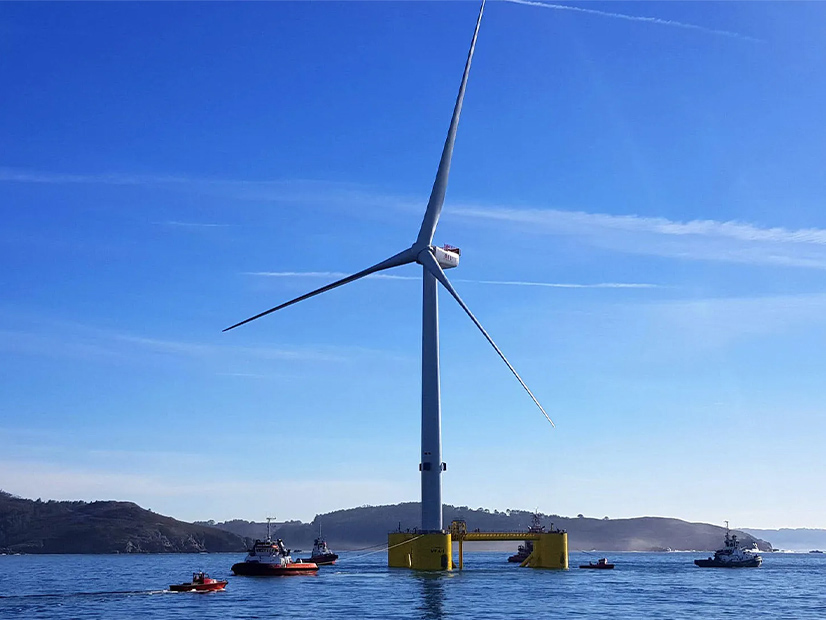The West Coast’s first offshore wind auction got off to a cautious start Tuesday, with bids closing the day at levels far lower than two East Coast wind auctions held earlier this year.
By the close of bidding at 5 p.m. ET, the high bids for five leases off the California coast had reached an average of $1,037/acre, a little less than the $1,083/acre paid for wind leases off the Massachusetts coast in 2018, the Interior Department’s Bureau of Ocean Energy Management reported.
The auction will resume Wednesday morning at 10 a.m. ET, and some observers predict bidding could continue through Thursday, with prices more than doubling from Tuesday.
The California auction involves 373,267 acres in two large wind energy areas — the Humboldt Wind Energy Area off the coast of Northern California and the Morro Bay Wind Energy Area off the coast of Central California. (See BOEM Sets California Offshore Wind Auction Date.)
The California bidding totaled $387.1 million at the close of business Tuesday. By comparison, winning bids for the New York Bight area in February set a record of $8,837/acre, totaling $4.7 billion, while a North Carolina auction in May fetched $2,900/acre, for a total of $315 million.
As the auction began Tuesday morning, California Gov. Gavin Newsom hailed it as a “historic step.”
“Together with leadership from the Biden-Harris administration, we’re entering a new era of climate action and solutions that give our planet a new lease on life,” Newsom said in a news release. President Biden established a goal last year for the U.S. to deploy 30 GW of offshore wind by 2030.
California has a mandate to provide retail customers with 100% clean energy by 2045 under 2018’s Senate Bill 100. The state’s Energy Commission has proposed offshore wind goals of 25 GW by 2045 to help fulfill that target.
Environmental groups and trade associations lauded the start of the auction.
“California will be the big winner in this first lease sale for the state’s multigigawatt floating offshore wind resource,” Adam Stern, executive director of Offshore Wind California said in a statement. The trade group declined to comment on the bidding so far.
Reasons for Caution
Analysts had warned that bidders could be cautious given the West Coast’s lack of offshore wind infrastructure, including developed ports, and the floating wind turbines required in California’s deep offshore waters.
ClearView Energy Partners called floating offshore wind “a far more nascent and undemonstrated technology,” saying the higher risks could mean lower lease prices.
“The record number of [43] eligible companies bidding for the areas suggests a highly competitive environment that may not conclude until tomorrow or Thursday,” ClearView said in a statement previewing the auction.
“However, we are not yet convinced that final per-acre prices will exceed those reached for the WEAs leased off New Jersey and New York earlier this year,” the firm said. “While California has aggressive decarbonization targets and needs new non-solar renewable resources, it does not yet have policies specifically targeting offshore wind akin to those adopted by several East Coast states.”
The Business Network for Offshore Wind said it was “excited to see the commencement of the first West Coast and first floating offshore wind lease auction” but warned not to expect record prices.
“The Network does not believe the California leases will fetch as high of auction fees as the New York Bight but will likely eclipse what we saw in the Carolinas,” the trade association said in a statement. “The New York Bight had several key elements including a very visible path to offtake, strong monetary and public support from state governments, a visibly emerging port infrastructure and supply chain, and apparent willingness to tackle transmission. …
“Today, the California market is not as strong, and adding in new technology development will likely result in a lower price,” it said. “However, California is a premier market with strong political and public support and being the first to market is very attractive, as auction prices will only rise over time.”

